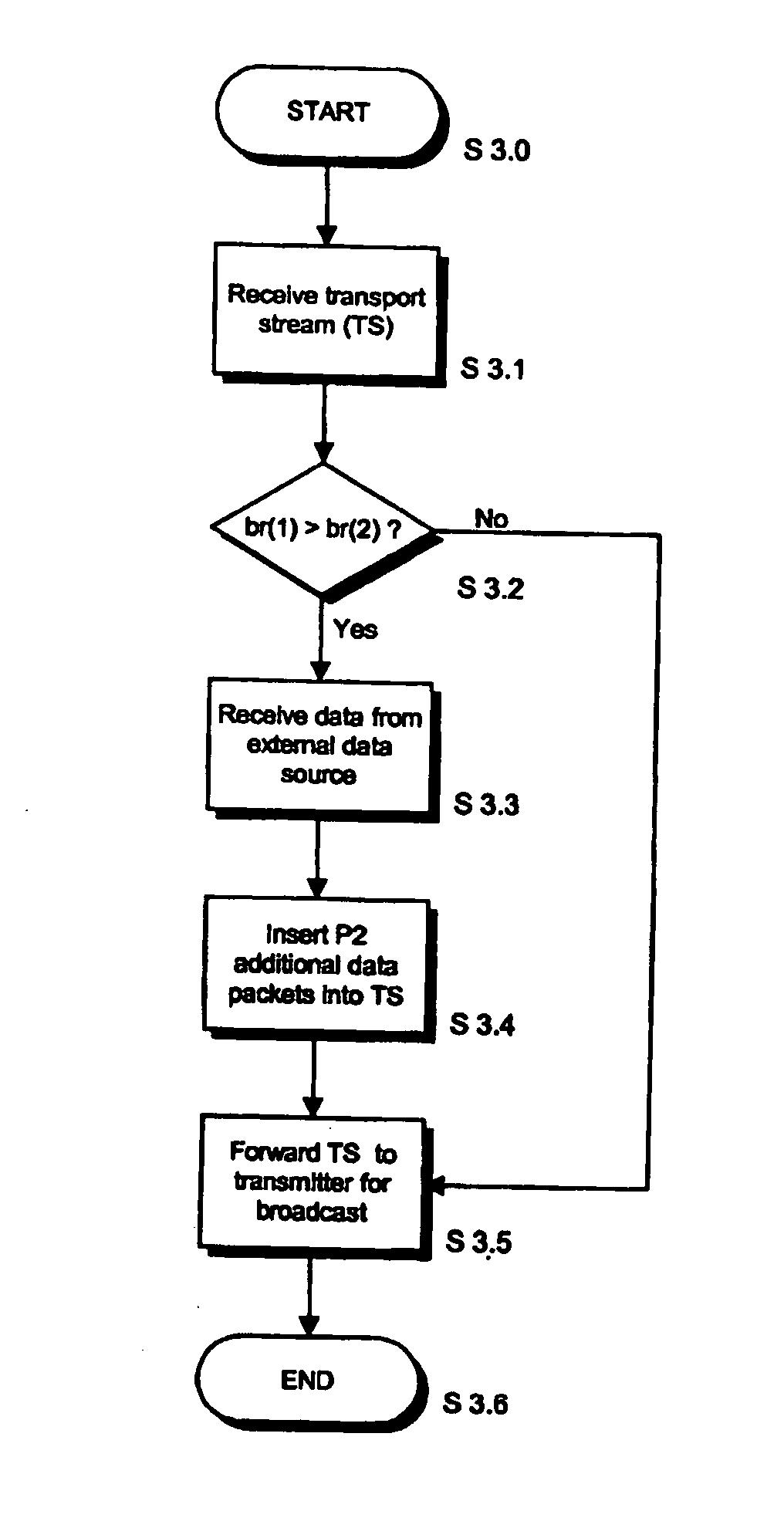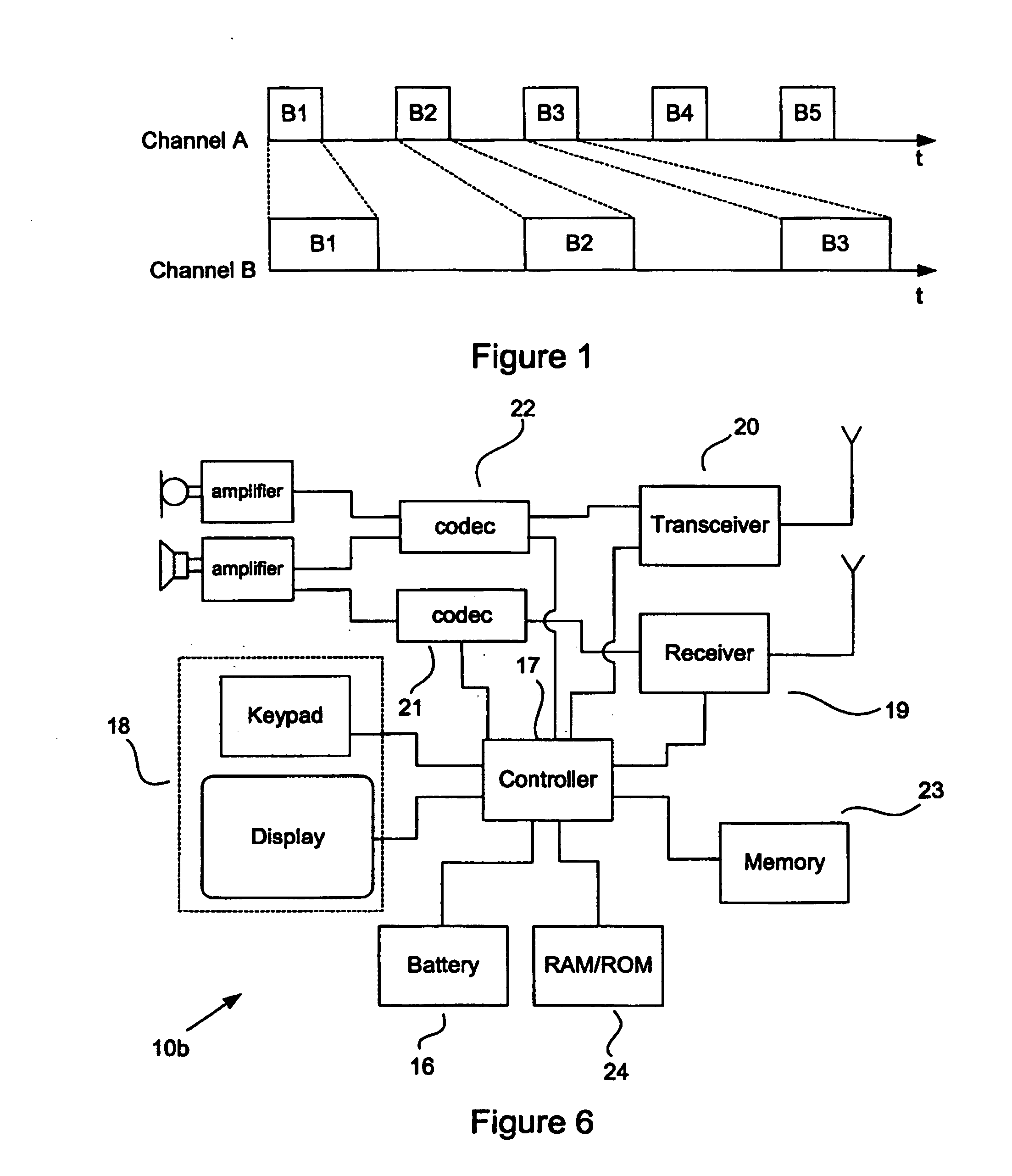Adjusting data burst tranmission rates
a technology of data burst and tranmission rate, which is applied in the field of data transmission, can solve the problems of large power consumption of the terminal, disruption of selective reception of content or services, and long operation time of the terminal, so as to reduce the length of time that the receiver is in the receiver, the effect of reducing power consumption and increasing the available transmission ra
- Summary
- Abstract
- Description
- Claims
- Application Information
AI Technical Summary
Benefits of technology
Problems solved by technology
Method used
Image
Examples
first embodiment
[0032]FIG. 2 shows a communication system according to the invention, in which a broadband digital broadcast head-end 1 is connected to a variety of content sources 2, 3, 4. Data packets relating to services and / or content, e.g. audio-visual content, data files, images, are delivered to the head-end 1. In this example, the data packets are in the form of IPv4 or IPv6 datagrams, although the invention is not limited to IP data delivery.
[0033] The data packets are encapsulated by a data processor 5 at the head-end 1 and grouped together into one or more bursts, which have a bandwidth equal to or approaching the maximum available bandwidth. A set of data packets relating to a particular service or the same content are arranged in the same burst or series of bursts, although a single burst may contain a plurality of sets of data packets that are unrelated to each other to ensure efficient use of bandwidth. The bursts are multiplexed by a multiplexer 6 according to a TDMA scheme. In this...
second embodiment
[0041] The burst rate adjustment process of FIG. 3 synchronises the data bursts so that a time interval ti between adjacent bursts B1-B5 in the series is the same in both cells C1, C2. The data bursts may be synchronised so that the transmission of each burst B1-B5 in the series begins in cells C1, C2 simultaneously, as shown in FIG. 4. Alternatively, according to the invention, the start times may be synchronised so that there is a fixed time offset to between a start time in cell C1 and a start time in cell C2 for each burst B1-B5 in the series, as shown in FIG. 5.
[0042] The synchronisation of the data bursts between cells C1, C2 minimises disruption of data reception when a terminal 10b moves from a location covered by the first cell C1 to another covered by the second cell C2 or vice versa. An example of a suitable terminal, here a mobile telecommunications device 10b, is shown in detail in FIG. 6 and comprises an internal power supply, preferably in the form of a rechargeable b...
third embodiment
[0046]FIG. 7 depicts the broadcast of series of bursts B1-B5 according to the invention. In this embodiment, the payload P2 is calculated as described above however, instead of adding the additional data L1-L5 in a burst at the end of each burst B1-B5, the additional data packets are interleaved with the data packets in each burst B1-B5, so that both the start and end times of bursts in cells C1, C2 are synchronised. Therefore, where a terminal 10b moves from cell C2 to cell C1, the calculation of the expected burst start time by the controller 17 may continue with little or no disruption, as the burst interval ti and, in this particular example, the burst start times and burst lengths, are unchanged.
PUM
 Login to View More
Login to View More Abstract
Description
Claims
Application Information
 Login to View More
Login to View More - R&D
- Intellectual Property
- Life Sciences
- Materials
- Tech Scout
- Unparalleled Data Quality
- Higher Quality Content
- 60% Fewer Hallucinations
Browse by: Latest US Patents, China's latest patents, Technical Efficacy Thesaurus, Application Domain, Technology Topic, Popular Technical Reports.
© 2025 PatSnap. All rights reserved.Legal|Privacy policy|Modern Slavery Act Transparency Statement|Sitemap|About US| Contact US: help@patsnap.com



